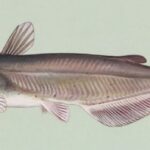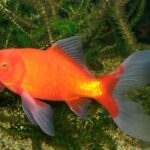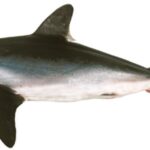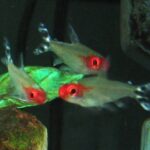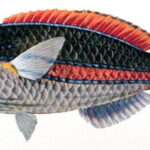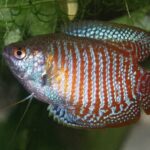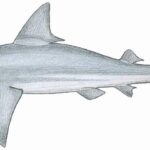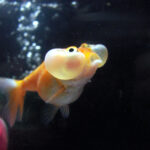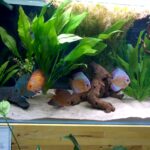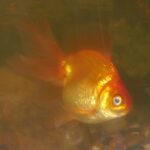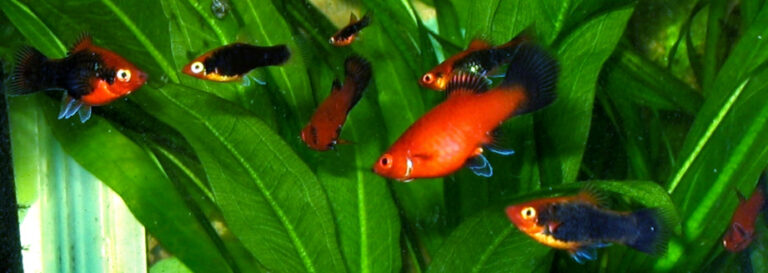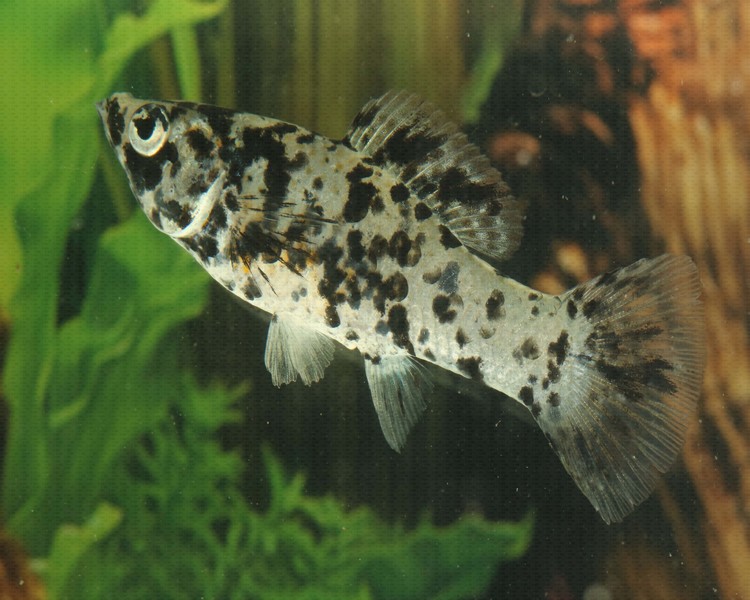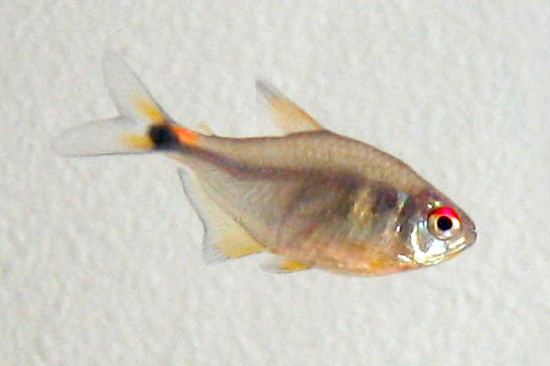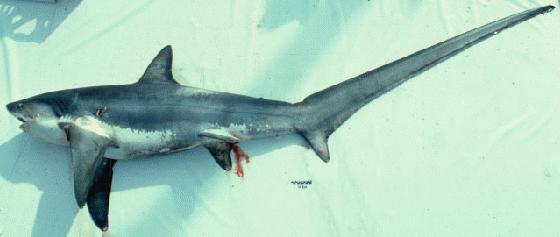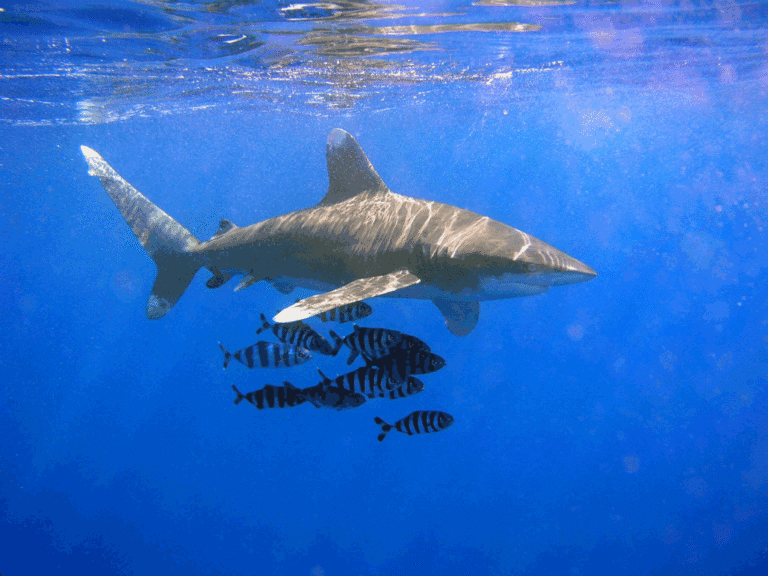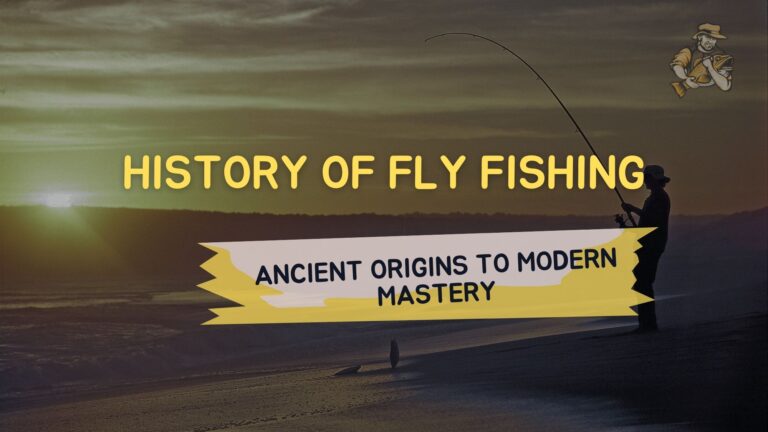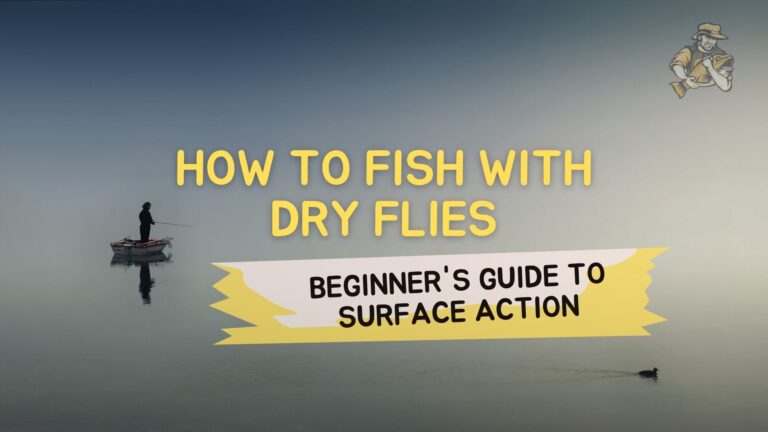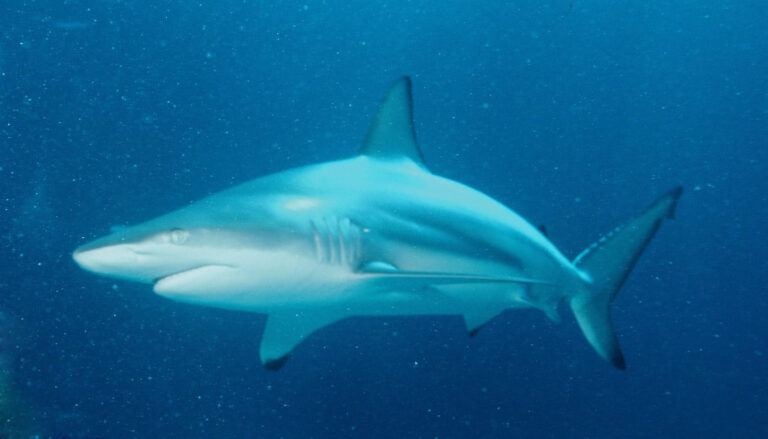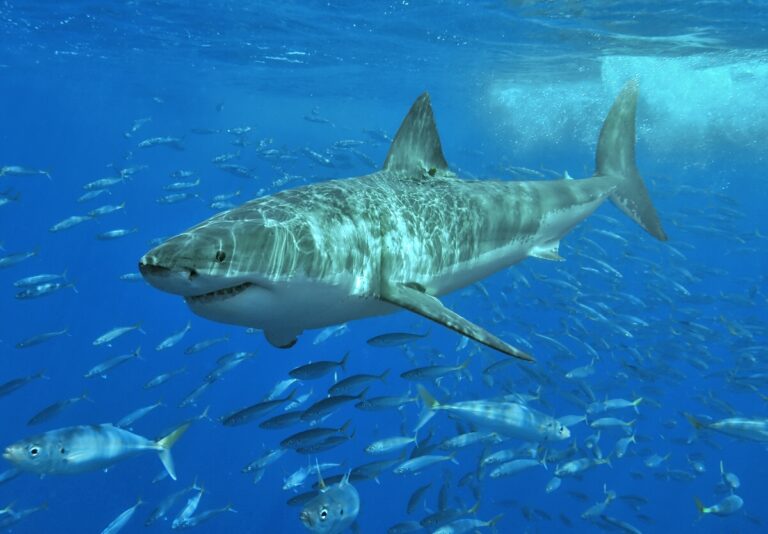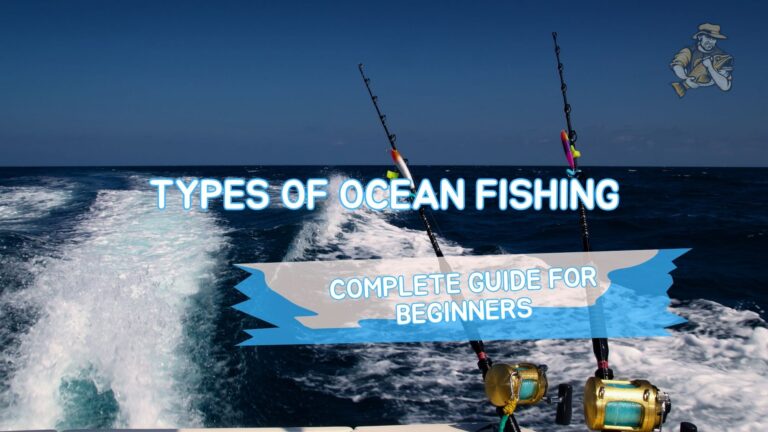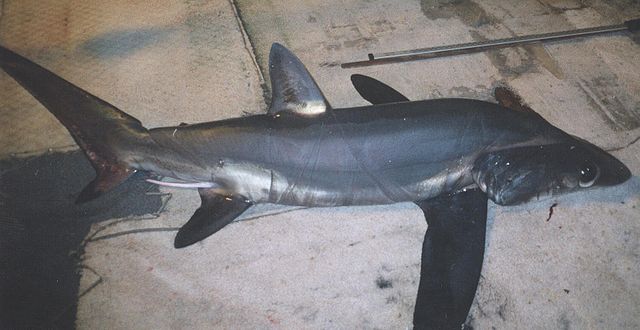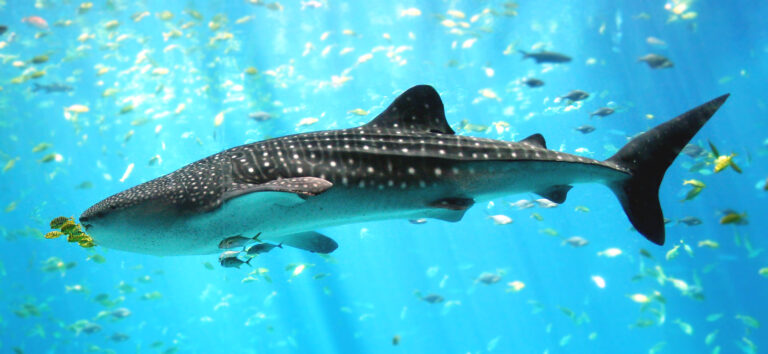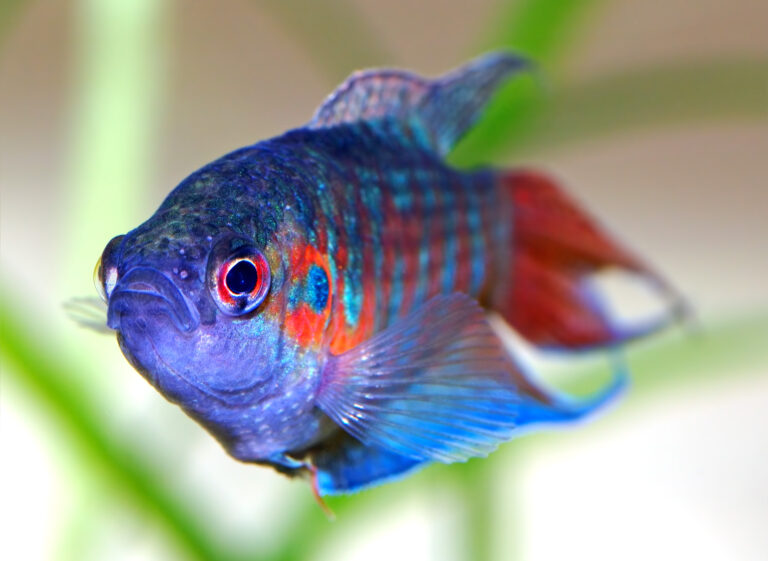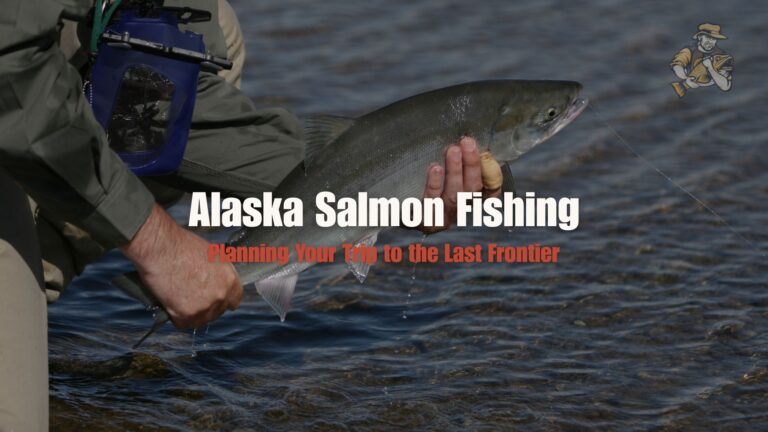Oranda Goldfish
By Ryan Maron | Last Modified: June 26, 2025
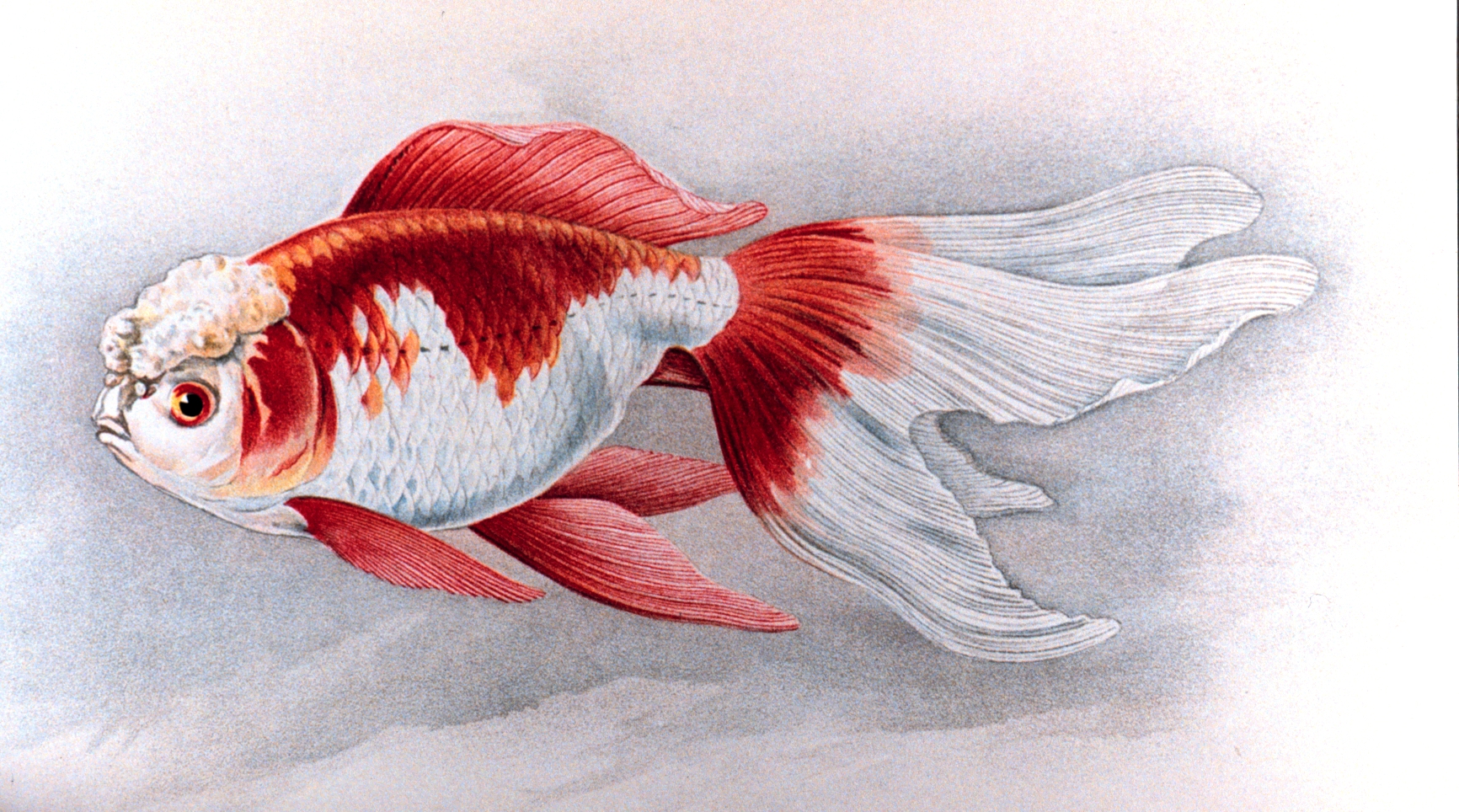
The Oranda Goldfish (Carassius auratus) stands as one of the most distinctive and cherished varieties in the world of ornamental fishkeeping. Characterized by its prominent cranial growth known as a wen or cap, this fancy goldfish variety represents centuries of selective breeding that originated in China before spreading throughout Asia and eventually worldwide. The Oranda Goldfish plays a significant role in aquarium ecosystems as a peaceful community fish, while its cultural importance spans decorative ponds, competitive breeding programs, and therapeutic aquarium environments.
Beyond its ornamental value, the Oranda Goldfish demonstrates remarkable adaptability to various aquatic environments, from indoor aquarium systems to outdoor pond installations. These hardy fish contribute to aquatic ecosystem balance through their omnivorous feeding habits, consuming both plant matter and small invertebrates while serving as indicators of water quality health. Their docile temperament and striking appearance have made them ambassadors for responsible fishkeeping practices and aquatic conservation awareness.
| Feature | Details |
|---|---|
| Common Name | Oranda Goldfish |
| Scientific Name | Carassius auratus |
| Family | Cyprinidae |
| Typical Size | 15-20 cm (6-8 inches), 85-140 grams |
| Habitat | Freshwater aquariums and ponds |
| Diet | Omnivorous |
| Distribution | Captive-bred worldwide |
| Conservation Status | Not Evaluated (Domesticated Variety) |
Taxonomy & Classification
The Oranda Goldfish belongs to the species Carassius auratus within the family Cyprinidae, commonly known as the carp and minnow family. This classification places the Oranda alongside thousands of other cyprinid species, including common carp, koi, and various wild goldfish populations. The scientific lineage traces back to the Prussian carp (Carassius gibelio), though extensive hybridization and selective breeding have created distinct morphological characteristics that separate ornamental varieties from their wild ancestors.
Within the goldfish subspecies classification system, the Oranda represents a fancy goldfish variety distinguished by its wen development and body conformation. Taxonomically, all goldfish varieties including Orandas are classified under the same species designation, with distinctions made at the variety or cultivar level rather than subspecies classification. The breeding lineage demonstrates clear genetic markers that differentiate Orandas from other fancy goldfish varieties such as Ryukins, Telescopes, and Lionheads.
The phylogenetic relationship between Oranda Goldfish and wild Carassius auratus populations shows significant genetic drift resulting from centuries of selective breeding. Modern molecular analysis reveals that captive goldfish populations, including Orandas, maintain distinct genetic signatures while retaining the fundamental chromosomal structure of their wild counterparts. This genetic stability allows for continued breeding programs and occasional hybridization with other goldfish varieties.
Physical Description
The most distinctive feature of the Oranda Goldfish is the pronounced cranial growth called a wen or hood, which develops gradually as the fish matures. This fleshy cap covers the top of the head and may extend over the gill covers, creating a distinctive rounded appearance that distinguishes Orandas from other goldfish varieties. The wen consists of specialized skin tissue that continues growing throughout the fish’s lifetime, requiring occasional maintenance in aquarium environments to prevent vision obstruction.
Body conformation in Oranda Goldfish displays a rounded, egg-shaped profile with a slightly compressed lateral dimension. Adult specimens typically measure 15-20 centimeters in total length, with exceptional individuals reaching up to 25 centimeters under optimal conditions. The dorsal profile shows a pronounced arch from the snout to the dorsal fin origin, while the ventral outline maintains a gentle curve that contributes to the breed’s characteristic appearance.
Coloration patterns in Oranda Goldfish exhibit remarkable diversity, ranging from solid colors to complex multicolored combinations. Common color varieties include red, orange, yellow, white, black, blue, and chocolate, with many specimens displaying combinations of these hues. The most prized varieties often feature contrasting color patterns such as red caps on white bodies or calico combinations that demonstrate genetic complexity. Scale types include both metallic and nacreous varieties, with metallic scales producing brilliant reflective surfaces and nacreous scales creating pearl-like iridescence.
Fin structure in Oranda Goldfish follows the standard goldfish pattern with seven fins total. The dorsal fin displays moderate height with smooth rays, while the paired pectoral and pelvic fins maintain proportional size to body dimensions. The anal fin shows typical goldfish configuration, and the caudal fin may exhibit various degrees of forking depending on breeding lineage. Fin coloration often matches or complements body coloration patterns.
Habitat & Distribution
Oranda Goldfish exist exclusively as captive-bred ornamental fish, with no wild populations or natural habitat range. Their distribution reflects human aquaculture activities and the global ornamental fish trade rather than natural biogeographic patterns. Commercial breeding operations concentrate primarily in Asian countries including China, Japan, Thailand, and Malaysia, though secondary breeding facilities operate throughout North America, Europe, and other regions with established aquarium industries.
Captive habitat requirements for Oranda Goldfish center on freshwater environments with specific water chemistry parameters and temperature ranges. Optimal conditions include water temperatures between 18-22°C (64-72°F), though the species demonstrates tolerance for temperature fluctuations between 4-30°C (39-86°F). Water pH preferences range from 6.5-8.0, with moderate hardness levels between 5-15 dGH providing suitable conditions for long-term health and breeding success.
Aquarium environments for Oranda Goldfish require minimum volumes of 75-100 liters per individual adult, with larger volumes promoting better health outcomes and reduced territorial stress. Substrate preferences include fine gravel or sand that accommodates natural foraging behaviors without risking impaction from ingested particles. Goldfish habitat requirements emphasize the importance of adequate filtration and regular water changes to maintain optimal water quality parameters.
Pond environments provide alternative housing options for Oranda Goldfish in temperate climate zones. Outdoor ponds require minimum depths of 1.2 meters to prevent winter freezing damage, with surface areas calculated to provide adequate oxygen exchange and swimming space. Pond ecosystems often support larger adult sizes and more natural behavioral patterns compared to aquarium environments, though predator protection becomes essential for maintaining healthy populations.
Diet & Feeding Behavior
Oranda Goldfish exhibit omnivorous feeding behavior with adaptable dietary preferences that reflect their cyprinid ancestry. Natural feeding patterns include browsing behaviors where fish systematically search substrate surfaces for food particles, algae, and small invertebrates. Mouth structure facilitates both surface feeding and benthic foraging, with protrusible lips allowing precise food selection from various surfaces and crevices.
Primary dietary components in captive environments include high-quality commercial goldfish pellets or flakes formulated specifically for fancy goldfish varieties. These specialized feeds contain balanced protein levels typically ranging from 25-35%, with reduced protein content compared to tropical fish foods to accommodate goldfish digestive physiology. Carbohydrate content provides energy while fiber components aid digestive health and prevent common goldfish ailments such as swim bladder disorders.
Supplemental feeding options enhance nutritional diversity and promote natural feeding behaviors in Oranda Goldfish. Fresh vegetable matter including blanched peas, lettuce, and spinach provides essential vitamins and aids digestive function. Live or frozen foods such as bloodworms, brine shrimp, and daphnia supply high-quality protein while stimulating hunting instincts. Feeding frequency typically involves 2-3 small meals daily rather than single large feedings to optimize digestion and maintain water quality.
Seasonal feeding adjustments become necessary for pond-kept Oranda Goldfish, with reduced feeding frequencies during cooler months when metabolic rates decrease. Water temperature below 10°C (50°F) signals cessation of feeding until spring warming occurs. This natural fasting period allows fish to utilize stored energy reserves while reducing metabolic stress during dormant periods.
Behavior & Adaptations
Oranda Goldfish display peaceful schooling behavior when maintained in groups, exhibiting reduced stress levels and more natural swimming patterns compared to solitary individuals. Social hierarchies develop within established groups, though aggressive interactions remain minimal except during breeding periods or resource competition. Group dynamics often involve following behaviors where individuals mirror swimming patterns and feeding activities of dominant group members.
Swimming patterns in Oranda Goldfish demonstrate adaptations to their modified body structure and enlarged cranial wen development. The rounded body shape creates altered hydrodynamics compared to streamlined wild goldfish, resulting in reduced swimming efficiency but maintained maneuverability. Buoyancy control relies heavily on swim bladder regulation, making these fish particularly sensitive to rapid pressure changes and water quality fluctuations.
Foraging adaptations include systematic substrate exploration using sensitive barbel-like structures around the mouth area. These tactile organs detect food particles and chemical signatures in the substrate, allowing successful feeding even in turbid water conditions. The protrusible mouth structure enables selective feeding on small food items while filtering out inedible particles, demonstrating refined feeding efficiency developed through selective breeding.
Seasonal behavioral adaptations become evident in pond environments where Oranda Goldfish experience natural temperature cycles. During autumn months, feeding activity increases as fish prepare for winter dormancy, while spring emergence triggers renewed activity levels and potential breeding behaviors. These cyclical patterns reflect retained wild goldfish instincts despite extensive domestication history.
Territorial behavior remains minimal in most Oranda Goldfish, though breeding individuals may establish temporary territories around potential spawning sites. Dominance displays typically involve gentle nudging rather than aggressive confrontation, reflecting the docile temperament selected through breeding programs focused on companion animal characteristics.
Reproduction & Life Cycle
Oranda Goldfish reach sexual maturity between 10-12 months of age under optimal conditions, though breeding capability may develop as early as 8 months in fast-growing individuals. Sexual dimorphism becomes pronounced during breeding season, with males developing tubercles (small white bumps) on the gill covers and leading edges of pectoral fins. Females display fuller body profiles due to egg development, while males maintain more streamlined appearances outside breeding periods.
Spawning behavior in Oranda Goldfish follows typical goldfish patterns, with breeding activity triggered by temperature increases and photoperiod changes that simulate spring conditions. Males actively pursue females through persistent following and gentle nudging behaviors, encouraging females toward suitable spawning substrates such as fine-leaved aquatic plants or artificial spawning mops. The courtship process may continue for several days before actual spawning occurs.
Egg deposition occurs in multiple batches over 2-3 days, with females releasing 1,000-2,000 eggs per spawning event depending on size and condition. Males simultaneously release milt to fertilize eggs externally, creating clouds of reproductive material that increase fertilization success rates. Adhesive eggs attach to vegetation or substrate surfaces, remaining vulnerable to fungal infection without proper water quality maintenance.
Incubation periods vary with water temperature, typically ranging from 4-7 days at optimal temperatures of 20-24°C (68-75°F). Newly hatched fry measure approximately 3-4 millimeters and depend on yolk sac nutrition for the first 2-3 days before beginning active feeding on microscopic organisms. Initial coloration appears bronze or gray, with characteristic Oranda features including wen development becoming evident after 3-4 months of growth.
Juvenile development progresses through distinct phases, with rapid growth during the first year leading to recognizable adult characteristics. Breeding programs for ornamental fish require careful selection of breeding stock to maintain desired characteristics while avoiding genetic defects associated with intensive selective breeding. Lifespan typically ranges from 10-15 years in well-maintained environments, with exceptional individuals reaching 20+ years.
Predators & Threats
Natural predators of Oranda Goldfish in captive environments remain limited due to their protected status in aquariums and managed pond systems. However, outdoor pond installations expose these fish to various predatory threats including birds, mammals, and aquatic predators. Herons, kingfishers, and other piscivorous birds pose significant threats to pond-kept goldfish, while raccoons, cats, and other mammals may attempt predation during nighttime hours.
Aquatic predators in pond environments include large insects such as dragonfly nymphs that threaten juvenile goldfish, while adult fish face potential predation from introduced species such as bass or pike if pond systems connect to natural waterways. The ornamental nature and reduced wild survival instincts of Oranda Goldfish make them particularly vulnerable compared to wild goldfish populations with intact predator avoidance behaviors.
Disease threats represent more significant challenges for Oranda Goldfish populations than predation pressure. Common goldfish diseases include bacterial infections such as fin rot and dropsy, parasitic infestations including ich and flukes, and viral conditions that can spread rapidly through dense populations. The enlarged wen structure creates additional vulnerability to bacterial infections and mechanical damage that may compromise immune system function.
Environmental threats in captive settings include water quality deterioration, temperature extremes, and oxygen depletion events that can cause mass mortality in goldfish populations. Poor filtration systems, overfeeding, and inadequate maintenance create conditions favoring pathogen proliferation and stress-related health issues. Chlorine and chloramine exposure from untreated municipal water supplies pose acute toxicity risks requiring proper water conditioning protocols.
Human-related threats encompass improper care practices, inadequate housing conditions, and irresponsible breeding that perpetuates genetic defects. Release of captive goldfish into natural waterways creates ecological disruption while exposing fish to unsuitable conditions and potential disease transmission to wild fish populations.
Conservation Status
The conservation status of Oranda Goldfish differs fundamentally from wild species due to their exclusively captive-bred nature and ornamental purpose. As a domesticated variety of Carassius auratus, Orandas do not qualify for traditional conservation status designations applied to wild species populations. However, genetic diversity conservation within breeding populations represents an important consideration for maintaining breed integrity and preventing genetic bottlenecks.
Captive breeding programs worldwide maintain extensive Oranda Goldfish populations through commercial aquaculture operations and hobbyist breeding initiatives. These distributed populations provide genetic security against localized catastrophic events while supporting continued development of new color varieties and physical characteristics. The global aquarium trade ensures wide distribution and multiple breeding lineages that contribute to overall population stability.
Genetic conservation concerns focus on maintaining breeding diversity within Oranda populations to prevent inbreeding depression and preserve desirable characteristics. Intensive selective breeding for extreme physical features may compromise overall health and survival capabilities, requiring balanced breeding approaches that consider both aesthetic and functional traits. Professional breeding programs increasingly emphasize health screening and genetic diversity preservation alongside traditional appearance-based selection criteria.
Wild goldfish conservation represents a separate concern, as escaped or released captive goldfish including Orandas may hybridize with wild Carassius auratus populations where they occur naturally. These hybridization events can dilute wild goldfish genetics while potentially introducing domestication-associated traits that may reduce wild population fitness. Responsible ownership practices emphasize preventing escapes and prohibiting intentional releases.
Regulatory frameworks in various jurisdictions address goldfish importation, breeding, and ownership through aquaculture permits and invasive species legislation. These regulations aim to balance legitimate aquarium trade interests with environmental protection concerns related to potential wild population impacts.
Human Interaction
Human interaction with Oranda Goldfish spans over a millennium of selective breeding and cultural significance, particularly within Asian societies where goldfish keeping originated as both recreational activity and status symbol. Traditional Chinese and Japanese goldfish culture established breeding standards and appreciation criteria that continue influencing modern Oranda development and evaluation. These cultural traditions emphasize aesthetic balance, coloration purity, and proportional development that define ideal Oranda characteristics.
Commercial aquaculture operations produce millions of Oranda Goldfish annually to supply global ornamental fish markets, creating significant economic activity within the aquarium industry. Major breeding facilities in Asia export fish worldwide, while secondary breeding operations in importing countries serve local markets and specialized variety development. This international trade supports employment in aquaculture, transportation, wholesale, and retail sectors while maintaining genetic flow between breeding populations.
Hobbyist breeding communities contribute substantially to Oranda Goldfish development through specialized clubs, competitions, and information sharing networks. These enthusiast groups maintain breeding records, develop new varieties, and preserve rare color combinations that might otherwise disappear from commercial breeding programs. Selective breeding in ornamental fish varieties demonstrates similar dedication among hobbyist communities working to refine specific characteristics.
Educational applications include Oranda Goldfish use in schools, therapy programs, and public aquariums where their docile nature and distinctive appearance provide engaging learning opportunities. These applications contribute to aquatic education awareness while demonstrating responsible animal care practices. Therapeutic benefits associated with goldfish keeping include stress reduction, routine establishment, and companionship for individuals in various care settings.
Scientific research applications utilize goldfish including Oranda varieties for studies in genetics, behavior, and aquaculture techniques. Their established breeding protocols and genetic stability make them valuable research models for understanding selective breeding effects and domestic animal adaptation processes.
Interesting Facts
The distinctive wen or cap that defines Oranda Goldfish continues growing throughout their entire lifetime, occasionally requiring surgical trimming in extreme cases where growth interferes with vision or feeding ability. This unique characteristic results from specialized skin cell proliferation that responds to genetic triggers activated during maturation, making each individual’s wen development pattern unique despite similar breeding lineages.
Oranda Goldfish demonstrate remarkable longevity among ornamental fish species, with documented cases of individuals living over 25 years in optimal care conditions. This extended lifespan exceeds many traditional pet species and requires long-term commitment from owners who may need to arrange care continuity across decades of fish keeping.
Color development in Oranda Goldfish can change dramatically throughout their lifetime, with many individuals displaying completely different coloration patterns as adults compared to their juvenile appearance. Environmental factors including diet, lighting, and temperature influence these color changes, while genetic factors determine the range of possible color expression within individual fish.
Memory and learning capabilities in Oranda Goldfish exceed common misconceptions about fish intelligence, with studies demonstrating recognition of individual humans, learned feeding responses, and spatial navigation abilities. These cognitive capabilities enable training for simple behaviors and explain their responsiveness to regular caretakers in aquarium environments.
Temperature tolerance in Oranda Goldfish includes survival at near-freezing temperatures, allowing pond keeping in temperate climates where surface ice formation occurs during winter months. This cold tolerance reflects their carp ancestry and enables year-round outdoor culture in appropriate pond systems with adequate depth and oxygen management.
Breeding compatibility between Oranda Goldfish and other fancy goldfish varieties produces hybrid offspring displaying intermediate characteristics, though maintaining pure breeding lines requires careful selection and isolation during breeding periods. These hybridization capabilities demonstrate genetic similarity across goldfish varieties despite significant physical differences.
Frequently Asked Questions
How large do Oranda Goldfish typically grow in aquarium environments?
Oranda Goldfish typically reach 15-20 centimeters (6-8 inches) in well-maintained aquarium systems, though growth rates and final size depend significantly on tank volume, water quality, and nutrition quality. Individuals kept in larger aquariums with optimal conditions may achieve slightly larger sizes, while cramped conditions can result in stunted growth and health complications.
What water temperature range is optimal for Oranda Goldfish health?
Optimal water temperatures for Oranda Goldfish range between 18-22°C (64-72°F), though they tolerate much wider temperature ranges from 4-30°C (39-86°F). Stable temperatures within the optimal range promote better immune function, feeding response, and overall health outcomes compared to fluctuating temperature conditions.
Can Oranda Goldfish be kept with other fish species in community aquariums?
Oranda Goldfish are compatible with other peaceful, cool-water fish species including other goldfish varieties, weather loaches, and some temperate minnow species. However, their slower swimming speed and distinctive wen growth make them vulnerable to fin-nipping species, while their substantial waste production requires careful consideration of tank bioload capacity.
How often should Oranda Goldfish be fed for optimal health?
Oranda Goldfish should receive 2-3 small meals daily rather than single large feedings, with portion sizes consumed within 2-3 minutes to prevent overfeeding and water quality deterioration. Proper feeding techniques for aquatic species emphasize consistency and portion control to maintain fish health and environmental stability.
Conclusion
The Oranda Goldfish represents centuries of selective breeding achievement, combining distinctive physical characteristics with hardy constitution and peaceful temperament that makes them ideal ornamental fish for dedicated aquarists. Their role extends beyond simple decoration to encompass cultural significance, educational value, and therapeutic benefits within human society. While requiring specific care considerations related to their modified anatomy and specialized needs, Oranda Goldfish continue demonstrating the successful intersection of aquaculture expertise and aesthetic appreciation that defines the ornamental fish industry.
Share The Article:
More Fish Species:
-
Wagtail Platy
The Wagtail Platy stands as one of the most distinctive and beloved freshwater aquarium fish, renowned for its elegant…
-
Marble Molly
The Marble Molly (*Poecilia latipinna*) stands as one of the most recognizable and widely distributed ornamental fish species in…
-
Sparkling Gourami
The Sparkling Gourami represents one of the most captivating miniature freshwater species available to aquarium enthusiasts and serves as…
-
Head and Tail Light Tetra
The Head and Tail Light Tetra (*Hemigrammus ocellifer*) stands as one of South America’s most distinctive characin species, instantly…
-
Thresher Shark
The Thresher Shark represents one of the ocean’s most distinctive and captivating apex predators, renowned for its extraordinarily elongated…
-
Oceanic Whitetip Shark
The Oceanic Whitetip Shark (*Carcharhinus longimanus*) stands as one of the ocean’s most formidable and recognizable apex predators, distinguished…
Discover
-
History of Fly Fishing: Ancient Origins to Modern Mastery
The gentle art of fly fishing has captivated anglers for centuries, evolving from a practical method of obtaining food…
-
How to Fish with Dry Flies: Beginner’s Guide to Surface Action
There’s something almost magical about watching a trout rise to sip your dry fly from the surface. I still…
-
Blacktip Shark
The Blacktip Shark (Carcharhinus limbatus) stands as one of the most recognizable and ecologically significant predators in tropical and…
-
Great White Shark
The Great White Shark (*Carcharodon carcharias*) stands as one of the ocean’s most formidable apex predators, commanding respect and…
-
Pennsylvania Fishing License: Complete Guide for Anglers in 2025
Getting your Pennsylvania fishing license sorted isn’t exactly the most exciting part of fishing, but it’s absolutely necessary if…
-
Types of Ocean Fishing: Complete Guide for Beginners
There’s something magical about standing at the edge of the vast ocean with a fishing rod in hand. I’ve…
Discover
-
Bigeye Thresher Shark
The Bigeye Thresher Shark represents one of the ocean’s most extraordinary predators, distinguished by its dramatically elongated tail fin…
-
Whale Shark
The whale shark (*Rhincodon typus*) stands as the ocean’s largest fish species, representing one of nature’s most remarkable gentle…
-
Caribbean Inshore Fishing: Bonefish and Permit Tactics
There’s something almost magical about stalking the shallow flats of the Caribbean. I still remember my first bonefish –…
-
Paradise Fish
The Paradise Fish stands as one of the most remarkable representatives of the labyrinth fish family, captivating aquarists and…
-
Stonecat
The Stonecat (Noturus flavus) represents one of North America’s most distinctive freshwater catfish species, serving as a crucial indicator…
-
Alaska Salmon Fishing: Planning Your Trip to the Last Frontier
I still remember the first time I hooked into a Kenai River king salmon. It was July 15, 2019,…

